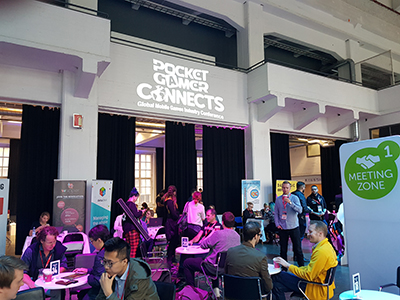Games developers from across the globe converged in Helsinki last week for Pocket Gamer Connects Helsinki 2019. The conference increased its attendance to 1300 delegates this year and featured 15 different tracks. Specializing in mobile gaming, PGC provides a convergence point for companies developing apps and vendors providing tools/services, from billion dollar organizations to small start-ups. For those of you that only have a few minutes to spare, here are the highlights
1. Unify your monetization and acquisition strategy
You can bring in revenue faster if your monetization and acquisition teams integrate their approach to users. The traditional method of acquiring as many users as possible and then figuring out how to monetize them is the not the most efficient way to drive revenues. Monetizing your users as soon as possible through advertising and in-app purchases is critical for business success and survival. Acquiring users who will stay engaged and pay is a smarter, more efficient way to do this. The monetization panel of experts recommended that monetization teams use the data about user engagement to feed into acquisition campaigns. Bango complements this approach by identifying new users known to make in-app payments, visit Bango Marketplace for more details.
2. Hyper-casual marches on
If you are not familiar with this category, these lightweight and instantly playable games are addictive and require simple tapping interaction. They usually have a simple UI and often revive some of the old arcade games of 70s and 80s. Monetization is typically through in-app advertising. China is seen as the next big growth market. Due to the simplicity of the games there is not much to adapt to fit new geographic regions.

3. Midcore is seeing a significant drop in paying users
AppsFlyer presented on various topics related to UA and monetization from their ‘State of Gaming’ industry report. Surprisingly, midcore games have seen a significant drop in paying users. The AppsFlyer attribution platform detected a decrease in the number of in-app purchase events for this category.
4. Time for TikTok?
TikTok (originally musical.ly), owned by ByteDance, is a social video app that allows users to share short videos. It started off in China but has now spread worldwide (150 markets and 75 languages). It has seen massive growth in 2019 (1 billion downloads, 500M MAU) and this is predicted to continue in 2020. The primary market is teenagers. Any games developer wanting to reach this demographic will use TikTok to reach their target market.
5. In-app bidding – what is it and when?
Each advertising space within an app will be available to bid on, per impression, in real time. This is sometimes referred to as header bidding and has been commonplace in the desktop browser world for a while. In-app bidding for mobile is coming, and it’s going to have a major impact on both the buy-side and sell-side of the mobile industry. The competition for advertising space will become more of a level playing field for everyone bidding, and will achieve better value for the apps providing the advertising space.
